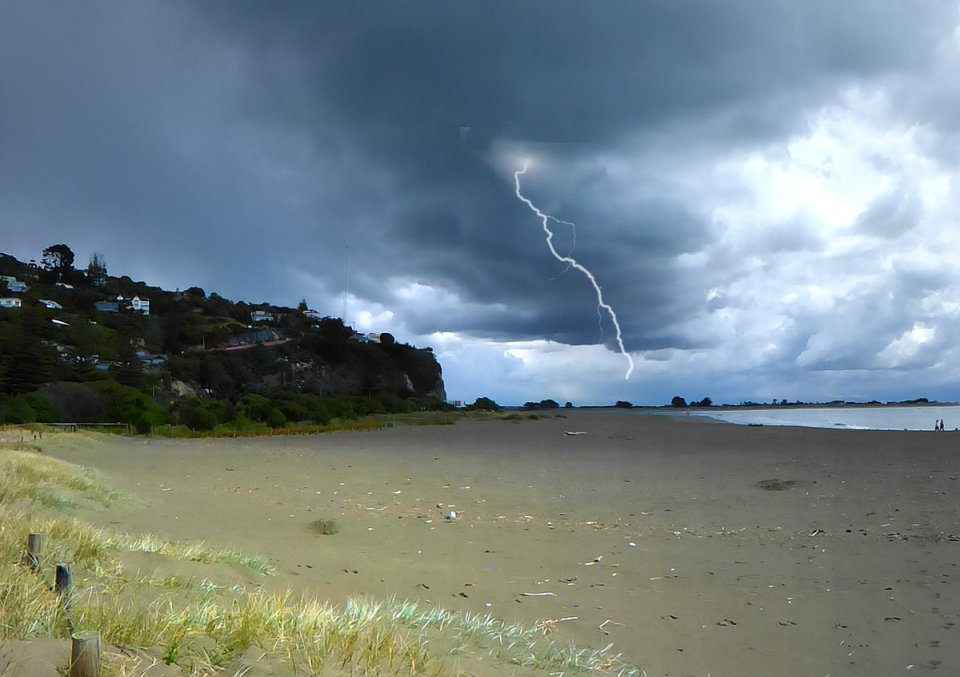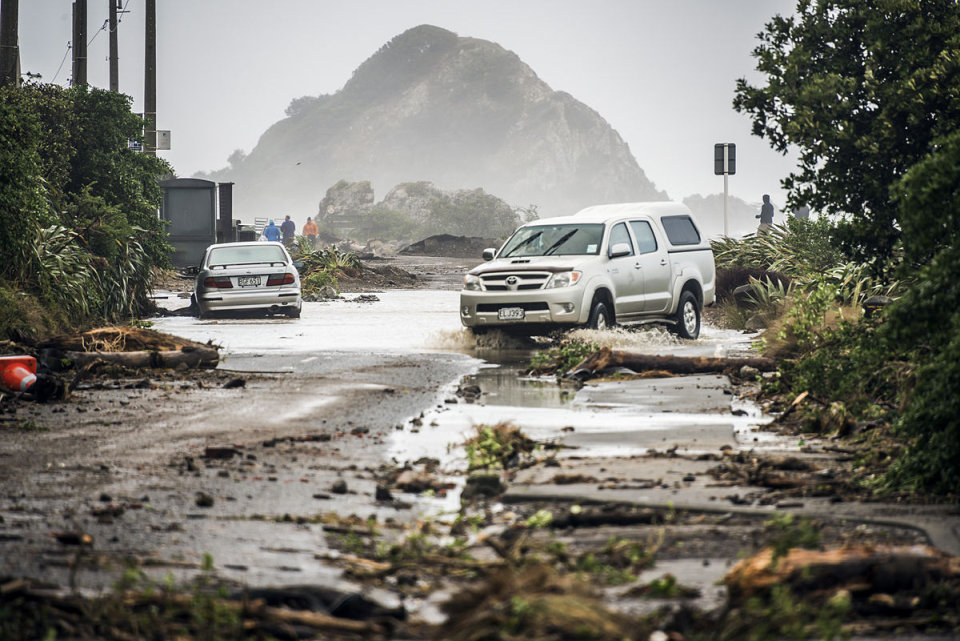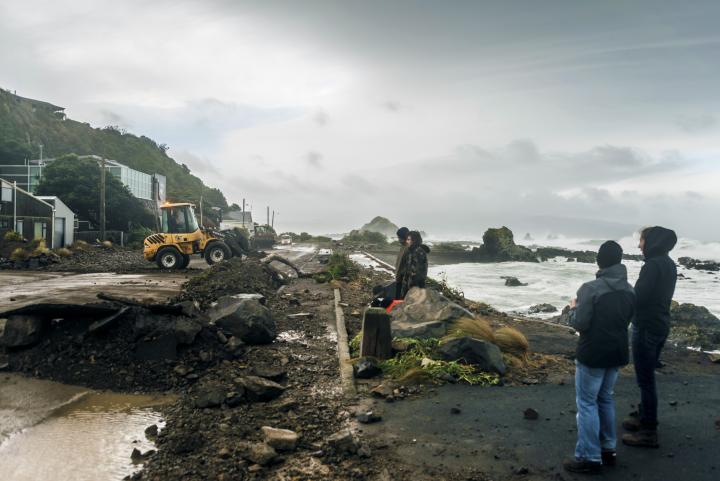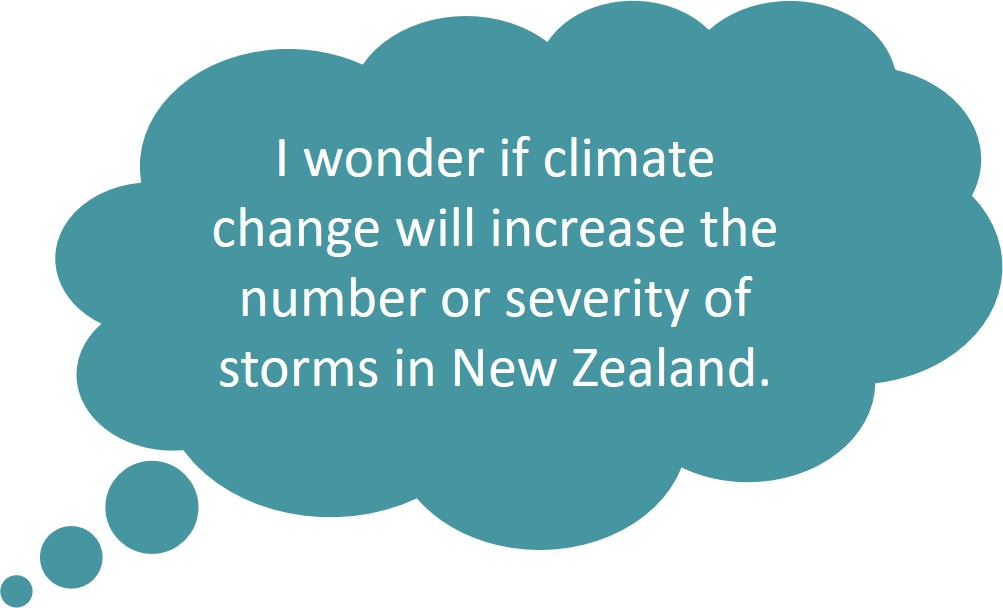You can contact LEARNZ, part of CORE Education, at:
Postal Address:
PO Box 13 678,
Christchurch 8141,
New Zealand
Storms can happen any time of the year. They bring heavy rain, hail, lightning, strong winds, and tornadoes. Storms can also cause flooding and storm surges, snow, and landslides. Dangers from storms include fallen trees and poles, torn-off roofs, fast-flowing currents in streams and rivers, flying objects, landslides and flooding.

Storms often hit New Zealand as it lies in the ‘Roaring Forties’, between 40 and 50 degrees latitude south. This is where mild air temperatures from the north meet cooler air from the south. Storms create different types of severe weather in New Zealand.
Heavy rain can cause stream and river levels to rise, leading to dangerous fast-flowing currents. High river levels with strong currents can destroy bridges and result in flooding.
Large hail can damage cars and roofs, and can break glass. Crops can be ruined and livestock killed. In large quantities, small hail can build up to centimetres deep on the ground, making driving dangerous.
Strong winds can fell trees and poles, tear off roofs and cause flying objects.
Tornadoes sometimes occur during thunderstorms in parts of New Zealand. A tornado is a narrow, violently rotating column of air extending down to the ground from the base of a thunderstorm. Tornadoes in New Zealand are generally small and weak, however, there is significant damage and threat to public safety when one or more tornadoes pass through a built up area.
Cyclones are large revolving storms that develop in the tropics. They are also called hurricanes or typhoons. Cyclones have a wind-speed of more than 120 kilometres per hour, but usually weaken as they meet the cooler sea temperatures around New Zealand so that they are not classified as cyclones by the time they reach our shores. Ex-cyclones are still dangerous storms that can cause major damage in New Zealand.
A snowstorm is a very heavy snowfall, usually accompanied by strong winds. Large snowfalls can make driving dangerous and on mountains they can increase the risk of avalanches, which can fall onto roads and ski fields. In very large amounts, snow can isolate communities, cut communications, disrupt power supply and cause buildings to collapse.
Coastal areas can suffer from storm surges, which are extra-high waves caused by low pressure in the air above the sea that causes the sea-level to rise.

Make and practise your emergency plan with your family, and make sure you and your family each have a grab bag and emergency supplies. Ask your family if you have materials and tools ready to repair windows, such as tarpaulins, boards and duct tape.
Help look for a safe place in your home for your family to gather during a thunderstorm. This should be a place where there are no windows, skylights, or glass doors, which could be broken by strong winds or hail and cause damage or injury.
Be aware that storms can trigger floods and landslides. Make sure you and your family know what to do.

Remind an adult at home to bring inside or tie down anything that can be broken or picked up by strong winds. If you have a trampoline, turn it upside down to minimise the surface area exposed to wind or tie it down.
Ask an adult to remove any debris or loose items from around your property. Branches and firewood may become missiles in strong winds.
Bring pets indoors. Many animals are unsettled by storms and it is more comforting and safer for them to be with you.
Stay inside. Don’t walk around outside and tell your family to avoid driving unless they absolutely have to.
Close windows and doors, and pull curtains and blinds over windows.
Ask an adult to stay informed by listening to the radio or by following your local Civil Defence Emergency Management Group online. Follow the instructions of civil defence and emergency services.
If you live in a region at risk of snowstorms, ask your family if they have other forms of power and heating. Remind an adult to check fuel supplies for woodburners, gas heaters, barbecues and generators.

Ready for a quiz? Try the Storms interactive activity.
Tornadoes sometimes occur during thunderstorms in some parts of New Zealand.
Know the warning signs for tornadoes:
If you see a tornado funnel nearby, tell others at home and take shelter immediately. If your house does not have a basement, move to an inside room with no windows or doors on the ground floor. Get under sturdy furniture and cover yourself with a mattress or blanket.